Removal Procedure
Caution: In order to Reduce the Risk of Fire and Personal Injury:
• If nylon fuel pipes are nicked, scratched or damaged during installation,
Do Not attempt to repair the sections of the nylon fuel pipes. Replace them. • When installing new fuel pipes, Do Not hammer directly on the
fuel harness body clips as it may damage the nylon pipes resulting in a possible
fuel leak. • Always cover nylon vapor pipes with a wet towel before using a
torch near them. Also, never expose the vehicle to temperatures higher than
115°C (239°F) for more than one hour, or more than 90°C (194°F)
for any extended period. • Before connecting fuel pipe fittings, always apply a few drops
of clean engine oil to the male pipe ends. This will ensure proper reconnection
and prevent a possible fuel leak. (During normal operation, the O-rings located
in the female connector will swell and may prevent proper reconnection if
not lubricated.)
Notice: Do not attempt to straighten any kinked nylon fuel lines. Replace any kinked nylon fuel feed or return pipes in order to prevent damage to the vehicle.
Notice: Cap the fittings and plug the holes when servicing the fuel system in order to prevent dirt and other contaminants from entering the open pipes and passages.
- Remove the engine and transmission as an assembly. Refer to Engine Replacement .
- Disconnect the fuel feed (1) and evaporative emission (EVAP) (2) pipes from the fuel tank. Refer to Plastic Collar Quick Connect Fitting Service .
- Remove the fuel/EVAP pipe clip nut.
- Perform the following procedures if equipped with auxiliary rear air and heat.
- Remove the fuel/EVAP pipe clip from the stud.
- Remove the fuel/EVAP pipe clips from the studs.
- Remove the fuel and EVAP pipes (1).
- Inspect the pipes for bends, kinks, and cracks.
- Replace the pipe or pipes as required.
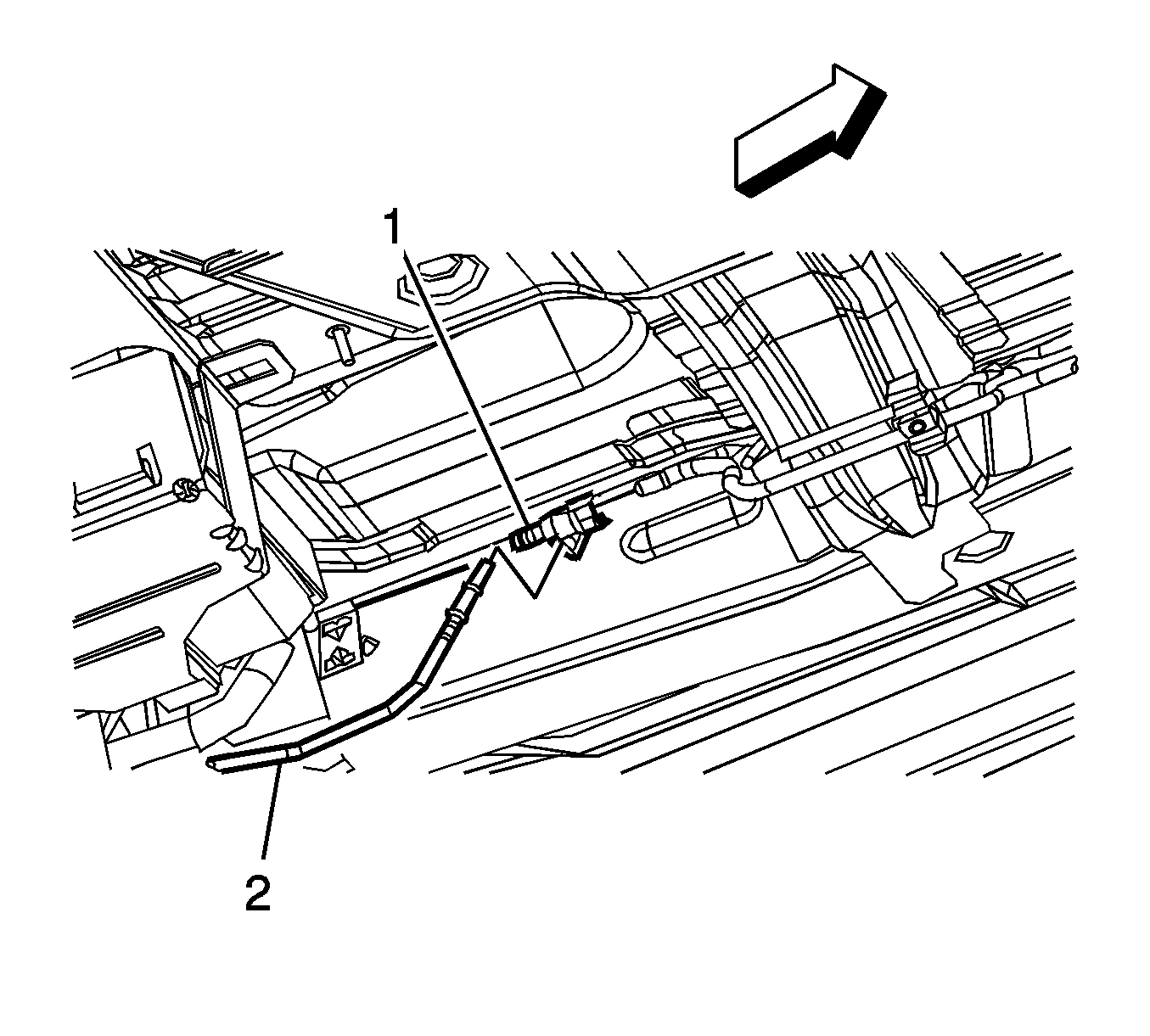
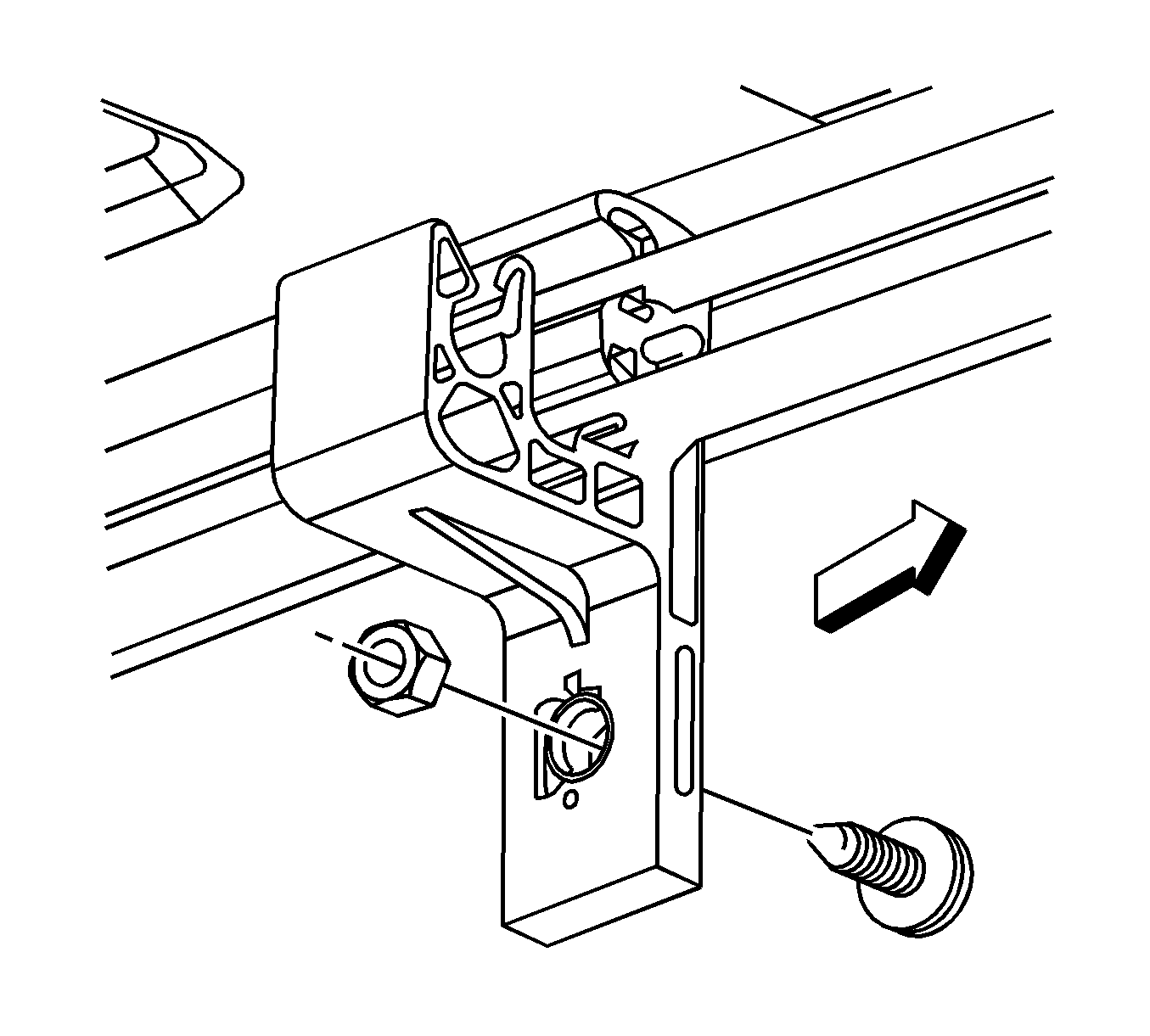
| 4.1. | Disconnect the rear heater and A/C pipes from the rear heating, ventilation, and air conditioning (HVAC) module. Refer to Auxiliary HVAC Module Replacement . |
| 4.2. | Move the rear heater and A/C pipes in order to remove the fuel pipes. |
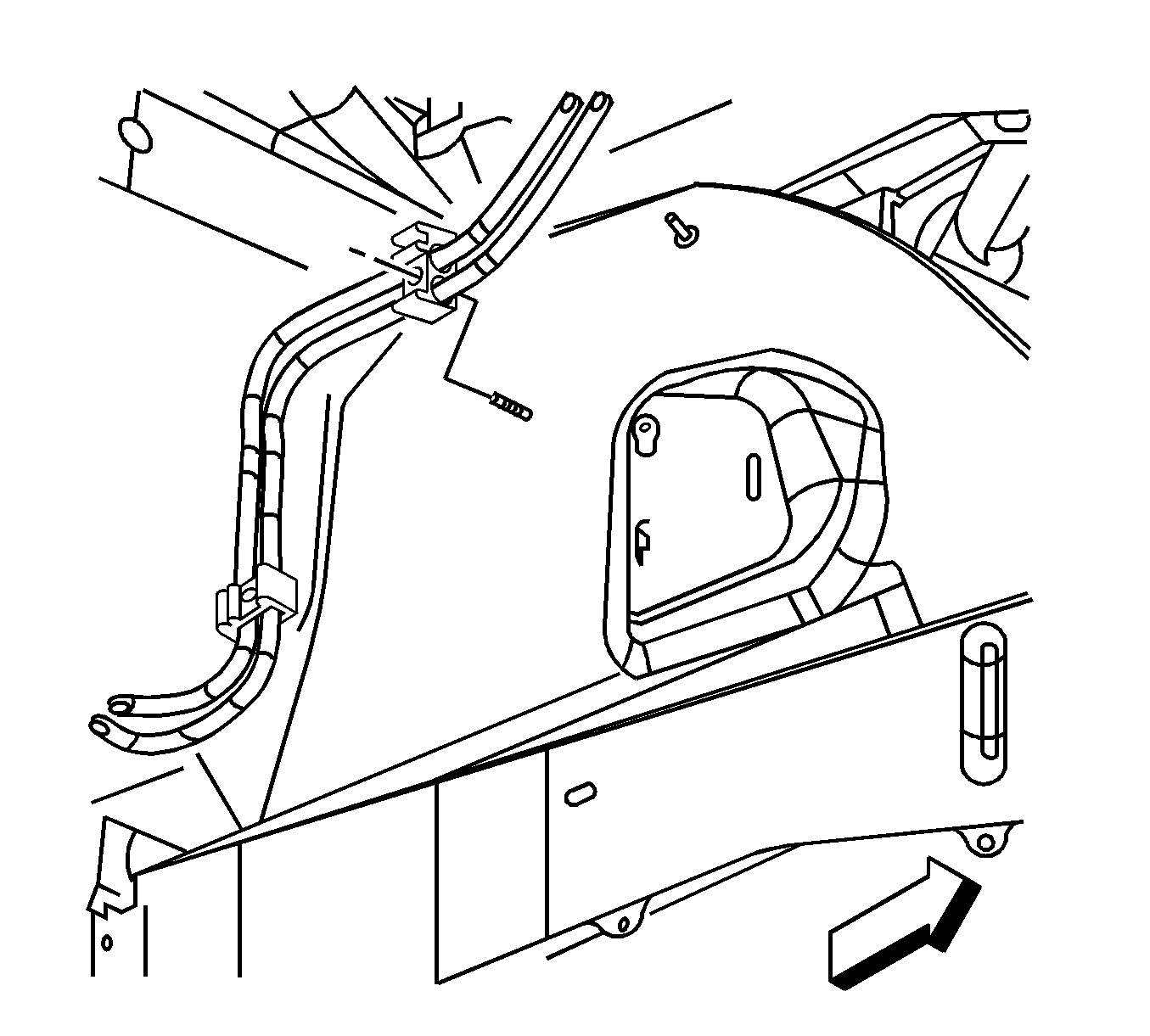
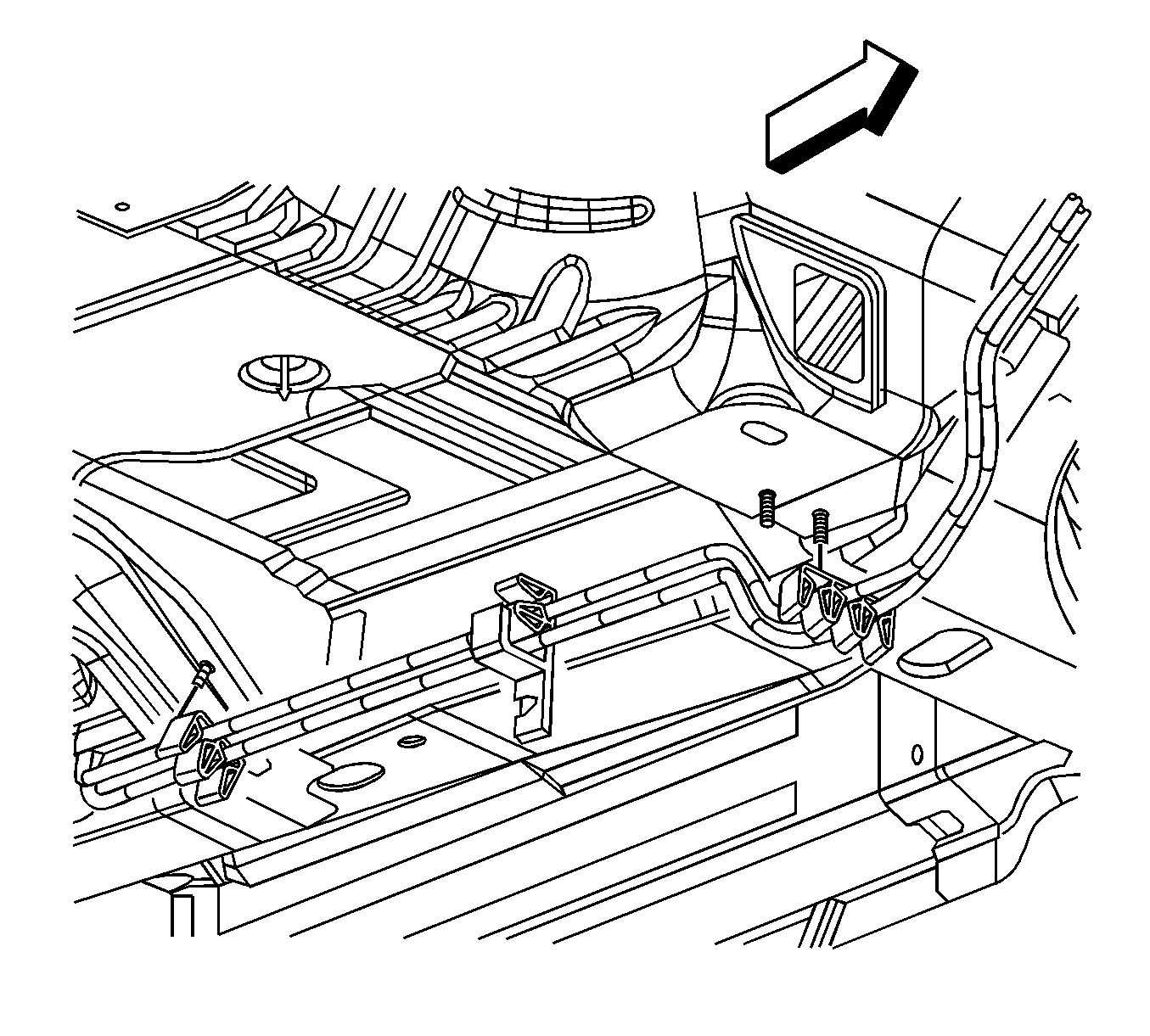
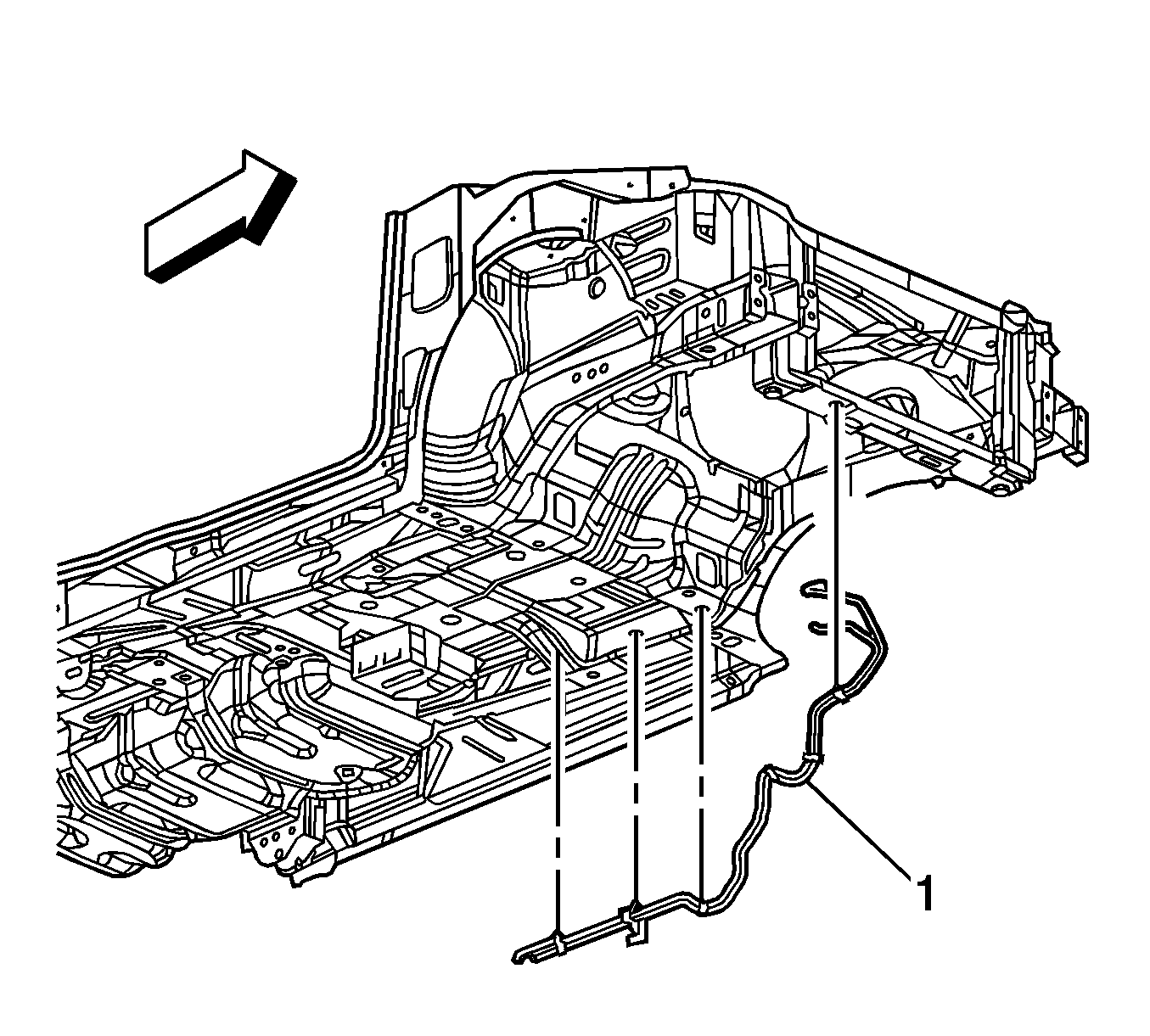
Installation Procedure
- Install the fuel and EVAP pipes (1).
- Install the fuel/EVAP pipe clips to the studs.
- Install the fuel/EVAP pipe clip to the stud.
- Install the fuel/EVAP pipe clip nut.
- Perform the following procedures if equipped with auxiliary rear air and heat.
- Connect the fuel feed (1) and EVAP (2) pipes to the fuel tank. Refer to Plastic Collar Quick Connect Fitting Service .
- Install the engine and transmission as an assembly. Refer to Engine Replacement .



Notice: Refer to Fastener Notice in the Preface section.

Tighten
Tighten the nut to 20 N·m (15 lb ft).
| 5.1. | Move the rear heater and A/C pipes into their original position. |
| 5.2. | Connect the rear heater and A/C pipes to the rear HVAC module. Refer to Auxiliary HVAC Module Replacement . |

